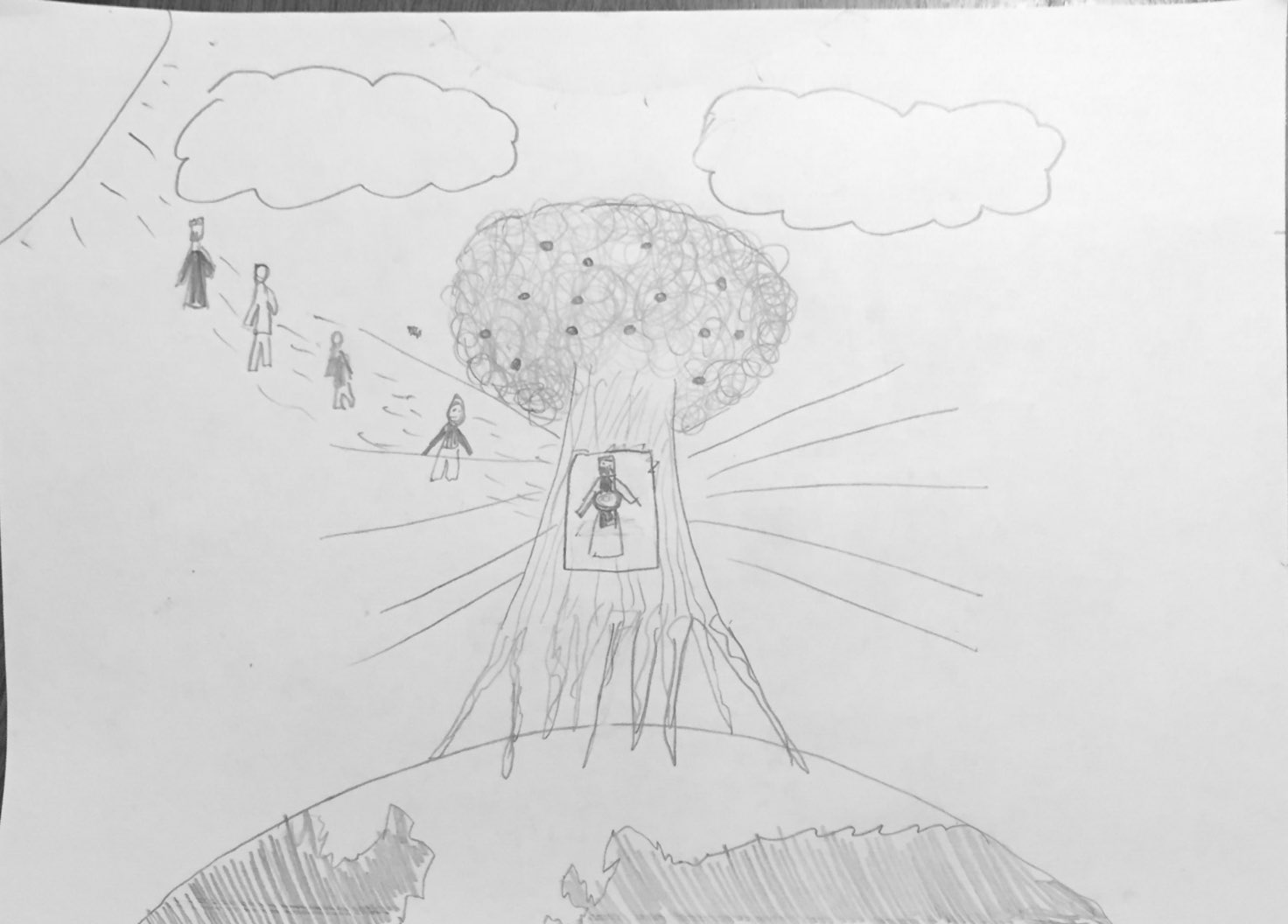3. Prophetic Light and Mutaqil; PLEASE NOTE: The drawing will not fully display; please drag it to your desktop and view it from there. Thank you!

I chose to make one of the projects for my portfolio based on the light verse in the Qu’ran, and on Muqatil ibn Sulayman’s interpretation of it, for several reasons. For one, this is a very famous verse, and thus deserving of artistic interpretation. Secondly, it has really vivid imagery, lending itself to visual art, and using pencil specifically allows me to best incorporate shading and textures in the tree and the trunk. Thirdly, I really like the pluralist aspects of the Qu’ran, and Mutaqil’s interpretation speaks to this.
The light verse, Qu’ran 24:35, is well-known, and speaks of God as a light within a lamp in a star-like glass from a heavenly olive tree with magical powers. I drew this light in a lamp in a glass in a blessed olive tree. The tree in my artwork is hovering above the Earth, so it is not in the East or the West. I drew both the heavens and the Earth, with the tree between them. Within the tree, I drew a lamp, which has light radiating all over the world.
However, as Prof. Asani notes in Chapter Three of his book Infidel of Love, Muqatil ibn Sulayman and scholars that agree with and expand on his exegesis believe that the lamp represents the Prophet, so I drew Muhammad’s body as the lamp, in the tree. They believe that prophetic light has been passed from Adam through the other prophets, finally residing in Muhammad, so I drew light passing down from a series of figures to Muhammad, whose light radiates over the world.
I really like this interpretation because of its pluralism; the idea of connecting the prophets of different peoples really spoke to me. As someone who does not come from any one religious background (my mother’s family is Jewish and very secular, my father’s is Catholic and less so), I’ve always looked for and admired ideas that bring together religions and look for their fundamental similarities instead of those that drive them apart and look for their differences. Sulayman’s interpretation was really meaningful to me because it connected a majority of the worlds’ peoples through their prophets, and it did so through a verse that is particularly meaningful to many Muslims.